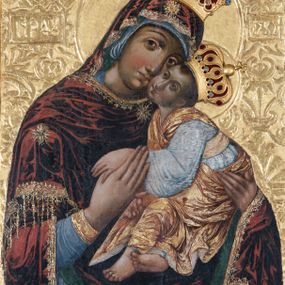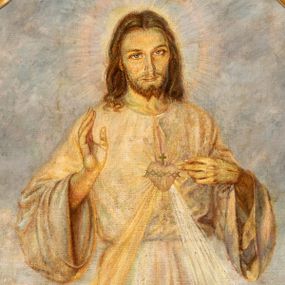
Sidzina
Elaboration author
Artur Karpacz
Monuments
Parishes
History abstract
Sidzina was established under the incorporation charter of King Sigismund Augustus in 1563 under the name of "Miłoszowa". The founder of the village was a peasant, Matthias Goryl, who received the office of the village leader with two lans of land and brought other settlers to the village, mainly peasants and logger farmers. Until the end of the Old Polish period, the village was directly dependent from the Lanckorona starosts, and its inhabitants paid all rents and tributes to each owner of the royal land. After the Swedish Deluge, the surrounding area became the scene of two peasant rebellions: the first one in 1670 and the second one in 1699. Shortly before the First Partition of Poland in 1772, on the hills near Maków, there were clashes between the Bar Confederates and the Russian army. At that time Sidzina was already a significant center, because it had 313 houses and over 2,000 people. In 1839, a part of the former Starosty called the Maków dominion was purchased by Count Philippe Saint-Genois d'Aneaucourt from Bażanowice and Jaworzno. The Galician Slaughter avoided Sidzina, but it did not spare the heirs of the neighbouring Toporzysko, the Wilkoszewski family. In 1874 a one-class folk school with a full-time teacher was opened in the village (the building was erected in 1884-1886). Deteriorating living conditions of enfranchised peasants and the progressing overcrowding of Galicia forced the search for various forms of income abroad, mainly in the form of seasonal work (the so-called saksy) in Germany, Belgium and France or emigration to the United States of America. In 1910 Joseph Chorąży organised a Voluntary Fire Brigade in Sidzina, and the headmaster of the two-class school, Gustaw Gorgoń, chaired the farmers' association. The front of World War I (1914-1918) fortunately avoided the town of Beskid Makowski, although forced conscription of men into the army and the confiscation of food, cattle and church bells took place. In 1920, the reborn Polish state temporarily took over the property of Charles Stephen Habsburg. The economic crisis, which has been deepening since 1929, has had a significant impact on the inhabitants of Sidzina. In the following years, the unified Polish People's Party strengthened in the region, and called for a boycott of the parliamentary elections of 1935. With the fall of the Second Polish Republic in September 1939, some of the occupied areas were incorporated into the Third Reich, while the General Government was created in the remaining areas. Sidzina became a border town, with Grenzschutz outposts located in the houses of the local peasants and in the shelter on Hala Krupowa. Germany quickly began to implement a brutal economic policy of enforcing high quotas of crops and food. Also, the recruitment of men and women to work in the Reich began. The progressing terror resulted in the establishment of secret Home Army divisions in 1943 in the region. Just before the end of the war, Skawina was pacified by the SS unit "Galizien". At the end of the 1940s, the life of the rural population was slowly coming back to relatively normal. In 1963, a branch of the Orava Ethnographic Park from Zubrzyca Górna was established in Sidzina.
How to cite?
Artur Karpacz, "Sidzina", [in:] "The Sacred Lesser Poland Heritage", 2026, source: https://sdm.upjp2.edu.pl/en/places/sidzina-1

